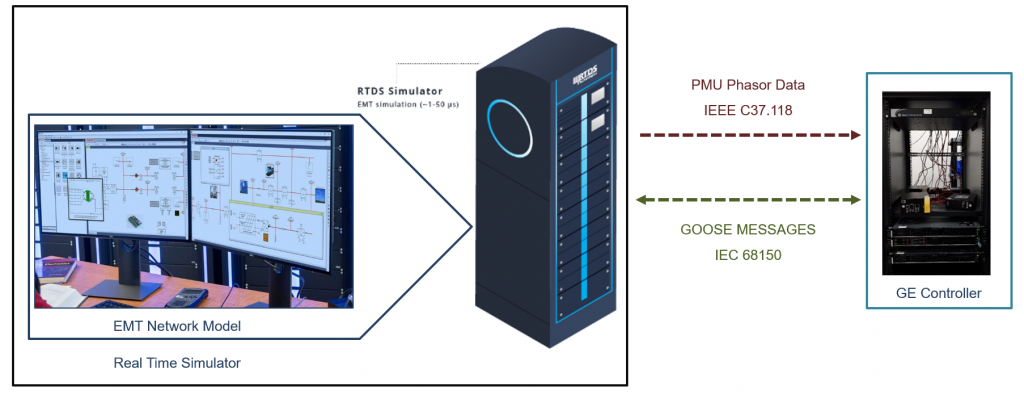The Distributed ReStart project looked at how distributed energy resources (DERs), such as solar, wind, biomass and hydro, could be used to restore power to the transmission network in the unlikely event of a blackout. While conventional black start involves a top-down approach of starting large generator, energising the transmission network and finally restoring loads, the bottom-up distribution restoration process involves starting and running zones of the distribution network, including customer load, and energising up to the transmission level. The project was a NIC (Network Innovation Competition) led by National Grid ESO in partnership with SP Energy Networks and TNEI, with the participation of GE Digital in the design, prototyping and testing of a control system to manage the restoration of the zone.
Work at the HVDC Centre focused on the 33 kV distribution network at Chapelcross in the SPEN network area. The network included a 60 MVA synchronous generator used to black start the network, and several smaller wind farms. A controllable load bank and battery were included in the model to help manage the network during islanded/black start conditions. The task was to use an real time digital simulator (RTDS) model of the distribution network to facilitate and support hardware-in-loop (HiL) testing equipment to be used during the black start process:
- Testing the protection associated with the synchronous generator, to ensure it operates correctly during black start conditions.
- Testing the Distribution Restoration Zone Controller (DRZC) designed by GE Digital, to manage the energy resources and control circuit breakers during black start. Work focused on the impact of communications delays on the performance of the control scheme, with communications delays introduced using a network emulator.

Overview of Test Setup for Testing the DRZC Controller by GE Digital
More information on the Distributed ReStart project is available on the project partner websites:

